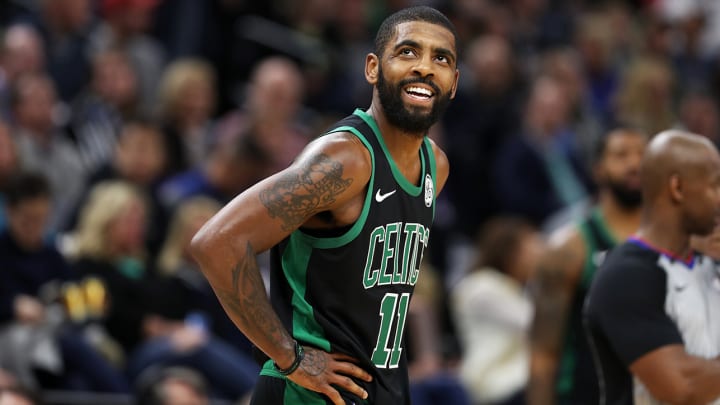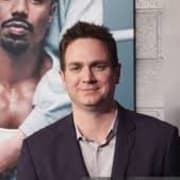Inside the Explosion of Deals That Tipped Off NBA Free Agency

Well, that was … something.
Six hours into the NBA’s official free agency period—and this is where we point out the laughability of the “official” free agency period and plead with the NBA to apply common sense, rearrange its financial calendar and move the start of free agency to before the draft—and virtually all of the top-20 free agents were off the board.
Kevin Durant and Kyrie Irving are headed to Brooklyn, set to (eventually) form one of the NBA’s most talented, albeit volatile, lineups.
D’Angelo Russell is bound for Golden State, stunning the Timberwolves—who believed they had Russell in the bag—to sign a four-year, max-level contract to be Stephen Curry’s running buddy with the Warriors.
Bojan Bogdanovic and Ed Davis are headed to Utah, joining recently acquired point guard Mike Conley on a Jazz team that will be among the frontrunners to win the west.
More than 50 contracts have been agreed to, with more than $3 billion in guaranteed money doled out.
So what happened?
The flurry of early activity wasn’t surprising, several current and former NBA team executives told SI.com. “The process isn’t supposed to start before 6 pm [on Sunday],” says former Nets and Sixers GM Billy King. “But it starts way before that.” Accelerating it was a combination of the elite stars (Durant, Irving) declining to take meetings and role players jumping quickly into the hundreds of millions of dollars in available cap space. “When you have this many teams with cap room, those second tier free agents and their agents want to secure deals right away,” says former Hawks GM Wes Wilcox. “There are going to be some players who benefit from waiting. There’s going to be a second wave after Kawhi [Leonard] makes his decision. But most agents want to get a deal done, to make sure the market doesn’t dry up on them.”
And the lack of meetings?
“This year seems unusual, based upon recent history,” says Wilcox. “Years prior, players took meetings and there were real pitches. I don’t know if this year is going to be a new norm, but certainly this is not something we have seen before. Before, you would prepare a detailed pitch, you would line up the people you would want to be in these meetings and you would share your vision for the franchise and how you envision that player fitting in and how you are going to continue to build your team into the future. It looks like Kawhi is going to do some version of this. But the meeting as we know it seems to have evolved.”
And here’s the thing: There were not any crazy deals. Three years and $58 million for Terry Rozier? A little high, but if Charlotte can resurrect the ’17-18 version of Rozier, it will be worth it. Three years and $51 million for Ricky Rubio? The Suns badly needed a point guard and you can see how Rubio fits on a team with plans to play fast next season. Five years and $178 million for Khris Middleton? OK, but Milwaukee had its back against the wall, needing to produce a legit contender to motivate Giannis Antetokounmpo to sign an extension next summer. Middleton had as much leverage as anyone on the market.
For weeks, there had been a summer of 2016 feel to this offseason, with executives suggesting it could compare to the cap spike fueled spending spree of ’16. Yet the kind of cap–killing deals (Joakim Noah, Ian Mahinmi, Allen Crabbe) that were doled out in 2016 were not there on Day 1, with teams, says King, “being much more prudent.”
“There are some contracts that you question,” says King. “But there weren’t any really bad outliers, like last time.”
The Knicks have been pilloried for reportedly being unwilling to offer Kevin Durant a max-level extension, but in the aftermath of Durant’s decision—and in recent days Durant had zeroed in on the Nets, in part because of Kyrie Irving’s desire to play there, league sources told SI.com—Knicks GM Scott Perry has operated shrewdly. He has handed out high–dollar deals to Julius Randle, Bobby Portis, Wayne Ellington, Elfrid Payton and Taj Gibson, but none of those deals extend beyond 2021, when a robust free agent class is projected to hit the market.
The Lakers may have taken the biggest Day 1 risk … by doing nothing at all. L.A. is all–in on Kawhi Leonard, and with Leonard slow playing the process, the Lakers have seen potential targets for the team's $32 million in cap space come off the board. If Leonard signs, L.A. will have the foundation for a new NBA superteam. If he doesn’t, the Lakers will have to scramble to find pieces (Miami’s Goran Dragic is available) to make the team a contender in the reloaded Western Conference.
“It’s a risk they have to take,” says Wilcox. “All indications are that they have a real opportunity [at Kawhi]. You have to play that out. It gives you the greatest chance to contend for a championship. They are probably on to Plan C or Plan D if Kawhi goes elsewhere, but given the landscape, you have to play it out.”
Indeed. A few hours into free agency and the landscape changed seismically. Parity—or the closest thing the NBA has seen to parity in years—may have been achieved. Kawhi Leonard is up next.
